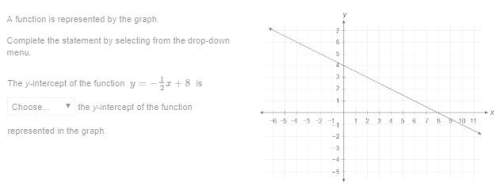
Mathematics, 06.10.2019 03:20 PONBallfordM89
Arandom sample of n1 = 16 communities in western kansas gave the following information for people under 25 years of age.
x1: rate of hay fever per 1000 population for people under 25
98 90 120 128 93 123 112 93
125 95 125 117 97 122 127 88
a random sample of n2 = 14 regions in western kansas gave the following information for people over 50 years old.
x2: rate of hay fever per 1000 population for people over 50
94 108 101 95 110 88 110
79 115 100 89 114 85 96
(i) use a calculator to calculate x1, s1, x2, and s2. (round your answers to two decimal places.)
x1 =
s1 =
x2 =
s2 =
(ii) assume that the hay fever rate in each age group has an approximately normal distribution. do the data indicate that the age group over 50 has a lower rate of hay fever? use α = 0.05.
(a) what is the level of significance?
state the null and alternate hypotheses.
h0: μ1 = μ2; h1: μ1 > μ2
h0: μ1 > μ2; h1: μ1 = μ2
h0: μ1 = μ2; h1: μ1 ≠ μ2
h0: μ1 = μ2; h1: μ1 < μ2
(b) what sampling distribution will you use? what assumptions are you making?
the standard normal. we assume that both population distributions are approximately normal with known standard deviations.
the student's t. we assume that both population distributions are approximately normal with unknown standard deviations.
the standard normal. we assume that both population distributions are approximately normal with unknown standard deviations.
the student's t. we assume that both population distributions are approximately normal with known standard deviations.
what is the value of the sample test statistic? (test the difference μ1 − μ2. round your answer to three decimal places.)
(c) find (or estimate) the p-value.
p-value > 0.250
0.125 < p-value < 0.250
0.050 < p-value < 0.125
0.025 < p-value < 0.050
0.005 < p-value < 0.025
p-value < 0.005
sketch the sampling distribution and show the area corresponding to the p-value.
(d) based on your answers in parts (a) to (c), will you reject or fail to reject the null hypothesis? are the data statistically significant at level α?
at the α = 0.05 level, we fail to reject the null hypothesis and conclude the data are not statistically significant.
at the α = 0.05 level, we fail to reject the null hypothesis and conclude the data are statistically significant.
at the α = 0.05 level, we reject the null hypothesis and conclude the data are not statistically significant.
at the α = 0.05 level, we reject the null hypothesis and conclude the data are statistically significant.
(e) interpret your conclusion in the context of the application.
fail to reject the null hypothesis, there is insufficient evidence that the mean rate of hay fever is lower for the age group over 50.
reject the null hypothesis, there is sufficient evidence that the mean rate of hay fever is lower for the age group over 50.
fail to reject the null hypothesis, there is sufficient evidence that the mean rate of hay fever is lower for the age group over 50.
reject the null hypothesis, there is insufficient evidence that the mean rate of hay fever is lower for the age group over 50

Answers: 3


Other questions on the subject: Mathematics

Mathematics, 21.06.2019 16:10, cuppykittyy
The probability that a college student belongs to a health club is 0.3. the probability that a college student lives off-campus is 0.4. the probability that a college student belongs to a health club and lives off-campus is 0.12. find the probability that a college student belongs to a health club or lives off-campus. tip: p(a or b) = p(a) + p(b) - p(a and b) 0.54 0.58 0.70 0.82
Answers: 2

Mathematics, 21.06.2019 20:00, nuclearfire278
Which of the following is an equation of a line parallel to the equation y=4x+1?
Answers: 1

Mathematics, 21.06.2019 22:00, stalley1521
How many solutions does the nonlinear system of equations graphed below have? a. one b. zero c. four d. two
Answers: 2

Mathematics, 21.06.2019 23:40, christinasmith9633
30 ! the graph shows the number of siblings different students have. select from the drop-down menus to correctly complete the statement.
Answers: 1
You know the right answer?
Arandom sample of n1 = 16 communities in western kansas gave the following information f...
Questions in other subjects:





Mathematics, 16.05.2021 20:20








